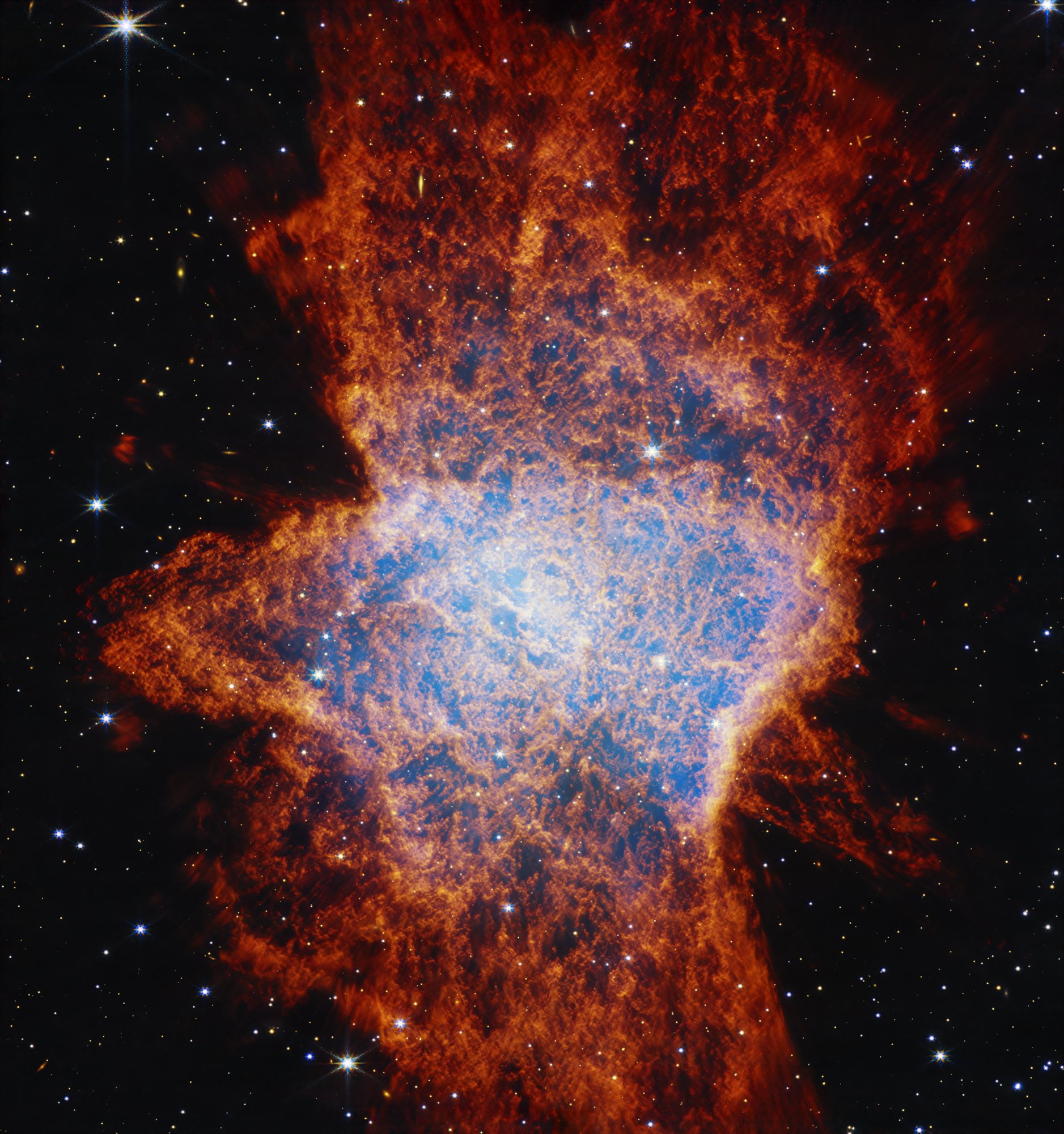When low-mass stars approach the end of their main-sequence phase, they expel clouds of gas that expand to form planetary nebulae. Since they were first identified in the late 1700s, astronomers have identified nebulae of all shapes and sizes, with most appearing circular, elliptical, or bipolar. However, some nebulae stray from this pattern, including the NGC 6072 nebula located about 3,060 light-years away in the southern constellation Scorpius. In a new series of high-resolution images taken by the James Webb Space Telescope (JWST), astronomers have noted some peculiar patterns that could provide insight into the lifecycle of stars.
At first glance, the images taken using Webb’s Near-Infrared Camera (NIRCam) and Mid-Infrared Instrument (MIRI) suggest that NGC 6072 is a giant mess reminiscent of a bug splattered on a windshield. However, the structure traced by Webb’s instruments suggests that some very complex mechanisms are at work within it. The NIRCam data shows a hot central core region glowing brightly with a light blue hue, surrounded by elliptical outflows that give it a multi-polar configuration. These outflows have resulted in two lobes of gas and dust that cross the center at near-vertical angles, while a third extends perpendicularly to form an equatorial plane.
The central region covers a large area of dark pockets surrounded by orange material that grows redder the farther it is from the center. This is consistent with the gas and dust growing colder the farther it ventures from the hot central core. The three-lobe structure could mean that at least two stars are at the nebula’s center, likely consisting of a younger companion to the aging star that has already lost most of its material. The MIRI data, meanwhile, captures the longer-wavelength infrared data, which emphasizes the web-like structure created by the outflows of dust.
The NGC 6072 nebula as imaged by Webb’s MIRI instrument. Credit: NASA/ESA/CSA/STScI
This image also reveals the star that could be central to the nebula (which appears as a pinkish-white dot), as well as concentric rings expanding from the central region to the edges of the lobes. This could also be evidence of a secondary star at the center, orbiting the older star and carving out rings in its wake. Alternately, the rings could have been caused by pulsations in the outflows, where gas and dust were expelled at long intervals (every thousand years or so) in all directions. The areas represented by NIRCam (red) and MIRI (blue) both trace the cool gas in the cloud (likely molecular hydrogen), while the central regions trace hot ionized gas.
As the aging star at the center cools, the nebula will dissipate into the interstellar medium (ISM), contributing the heavier elements from which new stars and planetary systems will form. The study of planetary nebulae is a major objective for the JWST, which will provide new insights into the lifecycle of stars and their impact on the surrounding environments. These studies could also shed light on what may become of our Sun when it reaches the end of its main sequence phase, billions of years from now.
Further Reading: Webb Space Telescope
